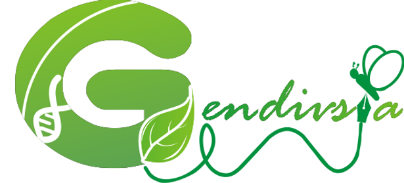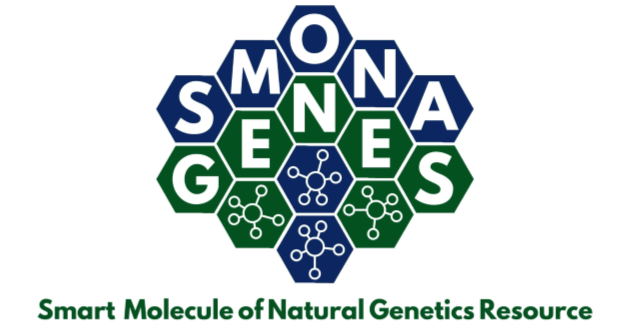Molecular Docking Study of Active Compounds in Amaranthus tricolor Leaves as High Mobility Group Box 1 (HMGB1) Inhibitor in Breast Cancer
DOI:
https://doi.org/10.21776/ub.jsmartech.2020.002.01.28Keywords:
Amaranthus tricolor, HMGB1, Flavonoid, Breast CancerAbstract
Breast cancer shows the proliferation of malignant epithelial cells that limit the ducts and lobes of the breast. If this process is not controlled, it will cause lumps that can then spread to other parts of the body and cause death. High-mobility group box protein 1 (HMGB1) has been reported to play roles in promoting cell survival of breast cancer cells. The inhibition of HMGB1 could be a reasonable target for the treatment of breast cancer. Amaranthus tricolor has been found could reduce the viability of breast cancer cells. In this study, we aim to predict the ability of the active compounds in Amaranthus tricolor leaves to inhibit the HMGB1 through molecular docking study. The molecular docking was conducted by using the PyRx software. This study shows that the four active compounds in Amaranthus tricolor leaves, namely isorhamnetin, routine, myricetin, and quercetin, have the smallest bond energy, indicating that the four compounds are the most stable and have the highest potency as HMGB1 inhibitor.References
American Cancer Society , 2017, About Breast Cancer, . Breast Cancer Facts Fig., 1–19. Available at: https://www.cancer.org/content/dam/CRC/PDF/Public/8577.00.pdf%0Ahttp://www.breastcancer.org/symptoms/understand_bc/what_is_bc.
Bray, F., Ferlay, J., Soerjomataram, I., Siegel, R.L., Torre, L.A., and Jemal, A. , 2018, Global cancer statistics 2018: GLOBOCAN estimates of incidence and mortality worldwide for 36 cancers in 185 countries, . CA. Cancer J. Clin. 68, 394–424.
Bray, F., Ferlay, J., Laversanne, M., Brewster, D.H., Gombe Mbalawa, C., Kohler, B., Piñeros, M., Steliarova-Foucher, E., Swaminathan, R., Antoni, S., et al. , 2015, Cancer Incidence in Five Continents: Inclusion criteria, highlights from Volume X and the global status of cancer registration, . Int. J. Cancer 137, 2060–2071.
Huang, B.F., Tzeng, H.E., Chen, P.C., Wang, C.Q., Su, C.M., Wang, Y., Hu, G.N., Zhao, Y.M., Wang, Q., and Tang, C.H. , 2018, HMGB1 genetic polymorphisms are biomarkers for the development and progression of breast cancer, . Int. J. Med. Sci. 15, 580–586.
Sun, S., Zhang, W., Cui, Z., Chen, Q., Xie, P., Zhou, C., Liu, B., Peng, X., and Zhang, Y. , 2015, High mobility group box-1 and its clinical value in breast cancer, . Onco. Targets. Ther. 8, 413–419.
Tripathi, A., Shrinet, K., and Kumar, A. , 2019, HMGB1 protein as a novel target for cancer, . Toxicol. Reports 6, 253–261. Available at: https://doi.org/10.1016/j.toxrep.2019.03.002.
Kang, R., Zhang, Q., Zeh, H.J., Lotze, M.T., and Tang, D. , 2013, HMGB1 in cancer: Good, bad, or both?, . Clin. Cancer Res. 19, 4046–4057.
Sarker, U., and Oba, S. , 2019, Antioxidant constituents of three selected red and green color Amaranthus leafy vegetable, . Sci. Rep. 9, 1–11.
Ezzati, M., Yousefi, B., Velaei, K., and Safa, A. , 2020, A review on anti-cancer properties of Quercetin in breast cancer, . Life Sci. 248.
Kanbarkar, N.N., Sambrekar, S.N., Patil, S.A., and Kangralkar, and V.A. , 2018, Anticancer Activity of Whole Plant Ofamaranthus Tricolor Linn . on Breast Cancer Cell Lines, . J. Chem. Pharm. Res. 10, 63–69.
Anh Vu, L., Thi Cam Quyen, P., and Thuy Huong, N. , 2015, In silico Drug Design: Prospective for Drug Lead Discovery, . Int. J. Eng. Sci. Invent. 4, 60–70. Available at: www.ijesi.org%7C%7CVolumewww.ijesi.org.
Khanam, U.K.S., and Oba, S. , 2013, Bioactive substances in leaves of two amaranth species, Amaranthus tricolor and A. hypochondriacus, . Can. J. Plant Sci. 93, 47–58.
Lipinski, C.A., Lombardo, F., Dominy, B.W., and Feeney, P.J. , 2012, Experimental and computational approaches to estimate solubility and permeability in drug discovery and development settings, . Adv. Drug Deliv. Rev. 64, 4–17.
Dallakyan, Sargis; Olson, A. , 2015, Participation in global governance: Coordinating “the voices of those most affected by food insecurity,†. Glob. Food Secur. Gov. 1263, 1–11.
Adianingsih, O.R., and Kharisma, V.D. , 2019, Study of B cell epitope conserved region of the Zika virus envelope glycoprotein to develop multi-strain vaccine, . J. Appl. Pharm. Sci. 9, 98–103.
Bilal, S., Iqbal, H., Anjum, F., and Mir, A. , 2009, Prediction of 3D structure of P2RY5 gene and its mutants via comparative homology modelling, . J. Comput. Biol. Bioinforma. Res. 1, 11–16.
Benet, L.Z., Hosey, C.M., Ursu, O., and Oprea, T.I. , 2016, BDDCS, the Rule of 5 and drugability, . Adv. Drug Deliv. Rev. 101, 89–98. Available at: http://dx.doi.org/10.1016/j.addr.2016.05.007.
Tang, D., Kang, R., Zeh, H.J., and Lotze, M.T. , 2010, High-mobility group box 1 and cancer, . Biochim. Biophys. Acta - Gene Regul. Mech. 1799, 131–140.
Downloads
Published
Issue
Section
License
Authors who publish with this journal agree to the following terms:
- Authors retain copyright and grant the journal right of first publication with the work simultaneously licensed under a Creative Commons - Attribution 4.0 International (CC BY 4.0) that allows others to share the work with an acknowledgement of the work's authorship and initial publication in this journal.
- Authors are able to enter into separate permission for non-exclusive distribution of the journal's published version of the work (e.g., post it to an institutional repository or publish it in a book), with an acknowledgement of its initial publication in this journal.
- Authors are permitted and encouraged to post their work online (e.g., in institutional repositories or on their website) prior to and during the submission process, as it can lead to productive exchanges, as well as earlier and greater citation of published work (See The Effect of Open Access).













